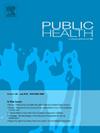新西兰奥特罗阿应对COVID-19中的种族公平:一项描述性流行病学研究
IF 3.9
3区 医学
Q1 PUBLIC, ENVIRONMENTAL & OCCUPATIONAL HEALTH
引用次数: 0
摘要
目的新西兰采取了国际上最严格的公共卫生大流行应对措施之一。我们调查了在应对和结果中是否实现了种族卫生公平,从2020年6月消除COVID-19到2022年放松欧米克龙应对措施,包括重新开放国际边境。研究设计描述性流行病学研究。方法对2020年6月9日至2022年4月13日期间的所有COVID-19病例、SARS-CoV-2检测患者和COVID-19疫苗接种者进行了三个反应期的调查:人口统计学特征和COVID-19结局、传播和疫苗接种模式、疫苗接种时间和检测率。结果每10万人发病15693例,每10万人住院138.7例,每10万人死亡9.8例。太平洋民族和土著Māori患COVID-19的风险分别比欧洲或其他民族高9.3至35倍和1.5至8.3倍,住院的年龄标准化风险分别高5.1倍和2.6倍,死亡的年龄标准化风险分别高9倍和4倍。Māori和太平洋人群在应对的关键时刻疫苗接种覆盖率较低,获得疫苗接种的速度较慢(两剂调整时间比分别为1.32 (95% CI分别为1.31 - 1.32)和1.14(1.14 - 1.14)),高于欧洲或其他人群。检测率仍然很高,特别是在Māori和太平洋人民中。尽管通过国际比较实现了较低的总体疾病负担,但新西兰多方面的应对措施并没有防止在获得疫苗接种和COVID-19结果方面存在明显的种族不平等。建议制定政策,解决上游决定因素方面的差异,在高危社区进行早期疫苗规划和实施,以及在应对决策中优先解决系统性的种族劣势和促进卫生公平。本文章由计算机程序翻译,如有差异,请以英文原文为准。
Ethnic equity in Aotearoa New Zealand's COVID-19 response: A descriptive epidemiological study
Objectives
Aotearoa New Zealand employed one of the most stringent public health pandemic responses internationally. We investigated whether ethnic health equity was achieved in the response and outcomes, from COVID-19 elimination in June 2020 through to Omicron-response easing, including international border reopening, in 2022.
Study design
Descriptive epidemiology study.
Methods
All COVID-19 cases, patients tested for SARS-CoV-2 and people vaccinated against COVID-19 between 9 June 2020 and 13 April 2022 were examined over three response periods: by demographic features and COVID-19 outcomes, transmission and vaccination patterns, time-to-vaccination and testing rates.
Results
There were 15,693 cases per 100,000, 138·7 hospitalisations per 100,000, and 9·8 deaths per 100,000 people. Pacific peoples and Indigenous Māori had, respectively, 9·3 to 35-fold and 1·5 to 8·3-fold higher risk of COVID-19, 5·1-fold and 2·6-fold higher age-standardised risk of hospitalisation and 9-fold and 4-fold higher age-standardised risk of death, than European or Other. Māori and Pacific peoples had lower vaccination coverage at critical points in the response, and slower access to vaccination (Adjusted Time Ratios for two doses 1·32 (95% CI 1·31–1·32) and 1·14 (1·14–1·14), respectively), than European or Other. Testing rates remained high, especially among Māori and Pacific peoples.
Conclusions
Despite achieving a low overall burden of disease by international comparisons, the multi-faceted New Zealand response did not prevent stark ethnic inequities in access to vaccination and COVID-19 outcomes. Policies which address disparities in upstream determinants, early vaccine programme planning and implementation with high-risk communities, and prioritisation that addresses systematic ethnic disadvantage and promotes health equity in response decisions is recommended.
求助全文
通过发布文献求助,成功后即可免费获取论文全文。
去求助
来源期刊

Public Health
医学-公共卫生、环境卫生与职业卫生
CiteScore
7.60
自引率
0.00%
发文量
280
审稿时长
37 days
期刊介绍:
Public Health is an international, multidisciplinary peer-reviewed journal. It publishes original papers, reviews and short reports on all aspects of the science, philosophy, and practice of public health.
 求助内容:
求助内容: 应助结果提醒方式:
应助结果提醒方式:


